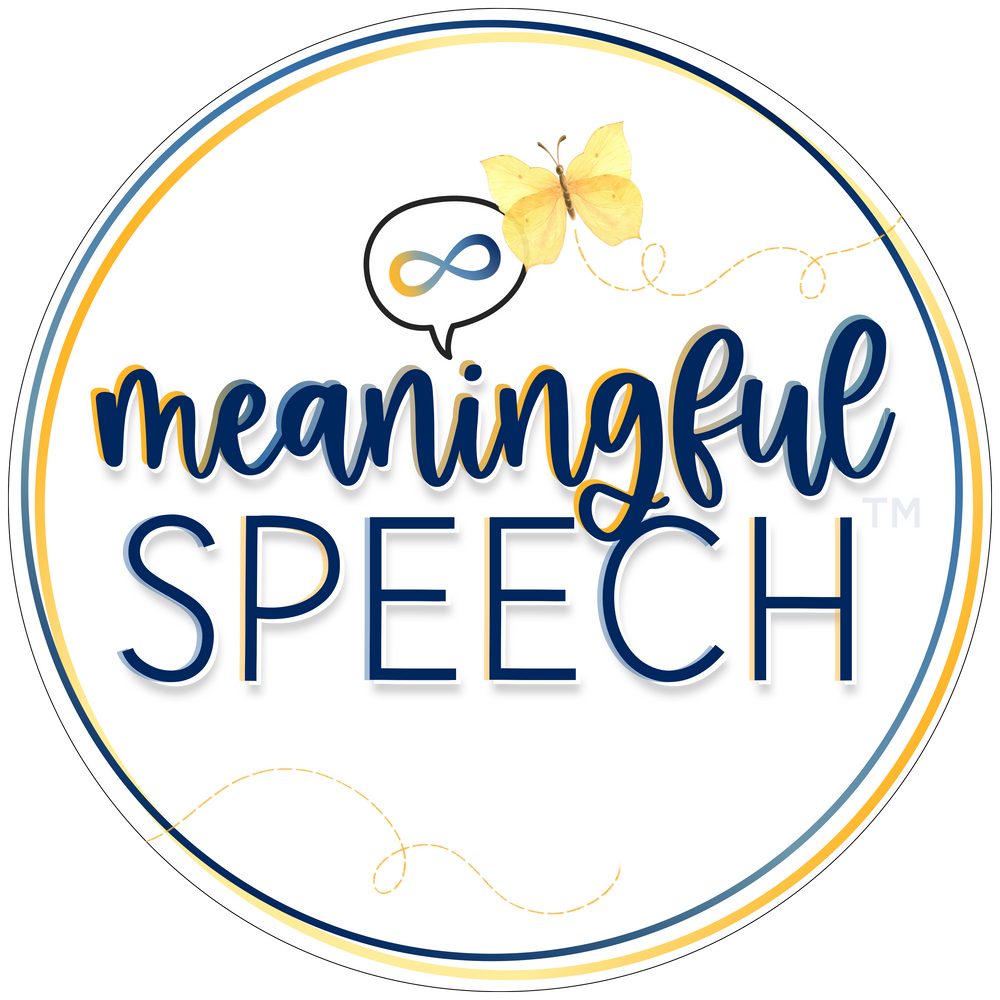4 tips for children who communicate with delayed echolalia
Dec 03, 2025
1. Acknowledge everything they say.
All of it! Honor all modes of communication, even if you do not immediately understand the meaning behind it and/or it is unintelligible. You can do this by smiling, nodding, saying “yeah” or “okay”, repeating what they said (if it is unintelligible, do your best to repeat what you can), etc. Echolalia communicates and we shouldn’t try to stop it or extinguish it!
For example, the child says the gestalt “peas and carrots!” and you’re unsure what the meaning is behind this gestalt, however, you repeat the gestalt to acknowledge it and let the child know you’ve heard them. Next, you do the detective work (see below).
2. Do the “detective work.”
Find out what their delayed echolalia means. Gestalt language processors have wonderful episodic memories and their gestalts often have an experience tied to them and are acquired at times of high emotion. Most gestalts/scripts cannot be taken literally and seem out of context to the communication partner. However, while they may often seem out of context to us, they all have meaning. Once we do the detective work and we really investigate, we can see that they’re all in context for the child and they apply to the situation.
For example, the gestalt “I’m swimming” could mean “I don’t like this'' which may have been picked up from a past experience swimming.
3. Eliminate questions and prompting.
Many of us are used to asking questions as a form of connection and interaction. However, gestalt language processors in the early stages aren’t ready for questions. Try using declarative language instead. Comment, narrate, and pause. Using declarative language will provide more natural language models for the child. Once a gestalt language processor is in Stages 4+, self-generating phrases and sentences, their responses to questions are more reliable.
For example, let’s say you’re playing with PlayDoh with a child, instead of asking them “What color is that?”, instead you might model “That’s so pretty!”
4. Model language from their perspective or a joint perspective.
Avoid pronouns “you” and “you’re” in the early stages. Instead, model language from the child’s perspective or a joint perspective. Gestalt language processors will use language exactly how they’ve heard it. This is why, for example, when you hear a gestalt language processor use “you” to reference themself, it is not a pronoun reversal. They are just using the language of the original speaker exactly how they heard it.
For example, instead of “You did it!”, you might model from a joint perspective and say “We did it!”
Want to learn how you can support your gestalt language processor as a caregiver?
We've created a webinar just for YOU. Echolalia and Your Child: A Caregiver’s Guide to Supporting Your Echolalic Child is a nearly three-hour, self-paced webinar led by Meaningful Speech team members Katie Arnold and Jess Teixeira.
Inside, we break down what echolalia is and why your child uses it, the foundations of Gestalt Language Development and the NLA framework, and how to shift from “teaching language” to truly supporting natural language development.
You’ll learn practical, everyday strategies to use at home, how to lay a strong foundation for growth through child-led connection, and ways to confidently advocate for your child in other settings like school or therapy.
PLUS: Your purchase includes access to our live Q&A on December 10th with Jess and Katie, where we’ll answer your questions, help you personalize the strategies, and support you in building confidence as your child’s communication partner. The Q&A replay will also be available to everyone who registers.
If you’re looking for clear, supportive guidance that feels affirming and doable in everyday life, you can join the webinar HERE.
Note: The price increases on December 10th, the day of the live Q&A, so now is the best time to join.
Want to learn more in-depth information about how to support gestalt language processors?
- There are many free podcasts, webinars and articles to get you started. A comprehensive list of resources can also be found on our website. We just released a new FREE masterclass on echolalia and child-led therapy that is perfect for anyone starting their learning journey or on the fence about purchasing our courses!
- Consider taking the Meaningful Speech course to learn more about how your child or client processes language, how you can help support them from echolalia to self-generated (original flexible) language, child-led therapy, and neurodiversity-affirming practices. Looking for something shorter? We have a 1-hour introductory course perfect for extended family, daycare or school staff.
- Consider taking our AAC + Gestalt Language Processing course. It will teach you how to identify, evaluate and support gestalt language processors who use AAC or who you think might benefit from AAC.
- Look for a speech-language pathologist (SLP) who "gets it" and can help you in supporting your child's language development. Check out our registry for SLPs who understand gestalt language processing and child-led therapy.
- Are you a school-based or private practice clinician looking for intake forms for new clients/students or creative visual reminder posters for your space? Check out the Meaningful Speech Marketplace.
